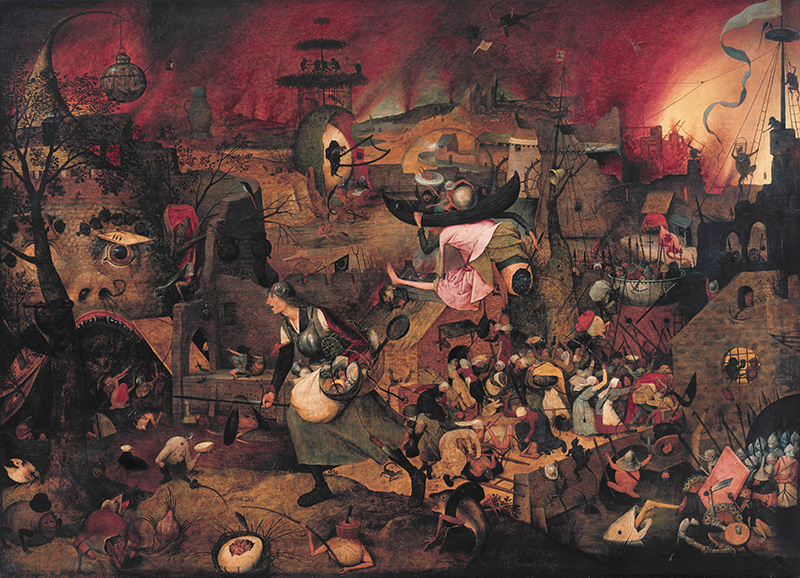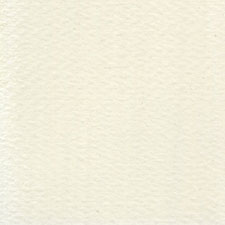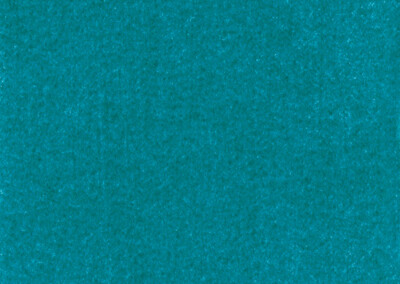Pieter Bruegel the Elder, Mad Meg
1562Paintings sorted by Historical period | Painter | Subject matter | Pigments used
Overview
Medium: Oil
Support: Panel
Size: 117.4 x 162 cm
Art movement: Renaissance
Museum Mayer van den Bergh, Antwerp, Belgium
Painting
Mad Meg (Dulle Griet) is a shrew from Flemish folklore depicted in Breugel’s painting as a distraught and disturbed woman wearing a knight’s armor and a sword and attacking the mouth of Hell. The landscape around her is filled with demonical figures resembling the figures painted by Hieronymus Bosch.
Pigments
Pigment Analysis
This pigment analysis is based on the works of the scientists at the Ghent University, Belgium (1). The scientists employed x-ray fluorescence (XRF), x-ray diffraction, and Raman spectroscopy to identify the pigments in this painting.
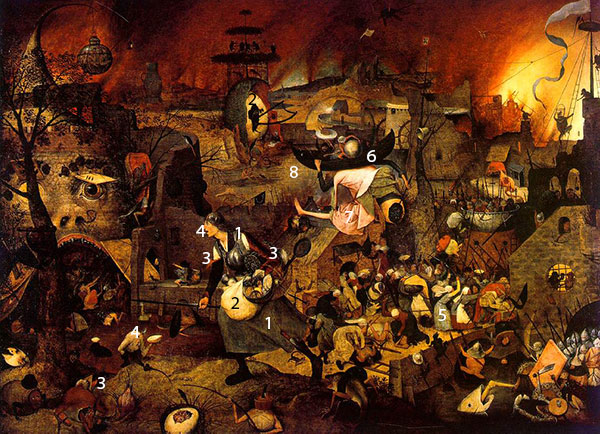
1 Mad Meg’s blue dress: smalt.
2 Mad Meg’s white bag and the white egg at the top of the composition: lead white.
3 Fiery red spots on Mad Meg’s sleeves and the red beak of the bird in the lower-left edge: vermilion
4 Flesh paint: vermilion mixed with lead white.
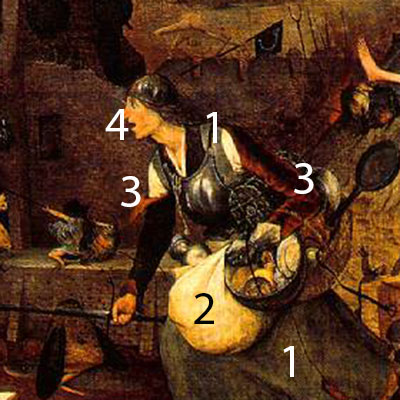
The absence of natural ultramarine in the dress of the principal figure (Mad Meg) confirms the hypothesis that Pieter Bruegel painted in a very economical manner.
5 Blue paint on the dress of the woman on the right: smalt.

6 The dark colour of the boat: copper resinate. Copper resinate is a green glaze prepared by solving verdigris in turpentine or a similar solvent.
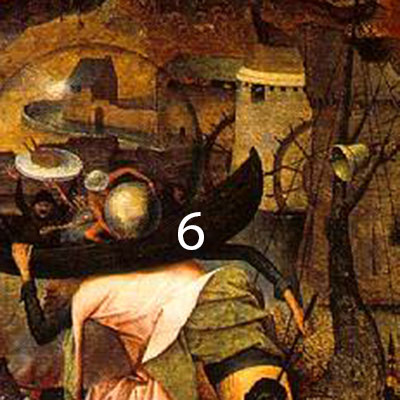
7 Pink dress of the figure on the right: No vermilion could be detected in this area, so the pink is not a mixture of lead white and vermilion. The pigment in this spot could not be identified by the methods used in this investigation.
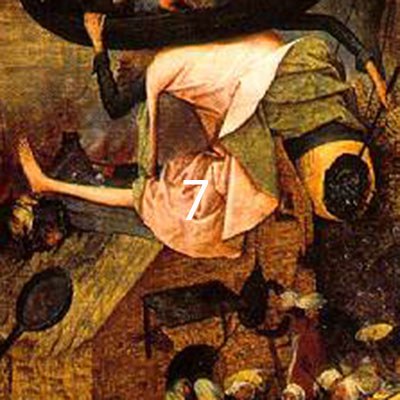
8 Colour of the water: discoloured copper resinate.
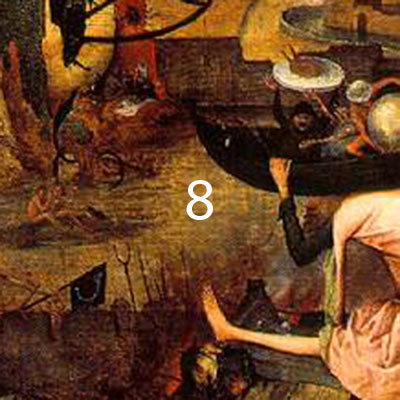
References
(1) Lien Van de Voordea, Jolien Van Pevenageb, Kaat De Langhec, Robin De Wolfa, Bart Vekemansa, Laszlo Vinczea, Peter Vandenabeelec, Maximiliaan P.J. Martens, Non-destructive in situ study of “Mad Meg” by Pieter Bruegel the Elder using mobile X-ray fluorescence, X-ray diffraction and Raman spectrometers, Spectrochimica Acta Part B Atomic Spectroscopy. 07/2014; 97. DOI: 10.1016/j.sab.2014.04.006
Pigments Used in This Painting
Resources
Videos
Video: 'Pieter Bruegel the Elder, Mad Meg' by Dr Sarah Apetrei. (historychristianity)
Video: 'The World of Pieter Bruegel the Elder' by BBC
Publications and Websites
Publications
(1) Lien Van de Voordea, Jolien Van Pevenageb, Kaat De Langhec, Robin De Wolfa, Bart Vekemansa, Laszlo Vinczea, Peter Vandenabeelec, Maximiliaan P.J. Martens, Non-destructive in situ study of “Mad Meg” by Pieter Bruegel the Elder using mobile X-ray fluorescence, X-ray diffraction and Raman spectrometers, Spectrochimica Acta Part B Atomic Spectroscopy (Impact Factor: 3.18). 07/2014; 97. DOI: 10.1016/j.sab.2014.04.006.
(2) Leonard Rosoman, Leonard Rosoman ARA on Bruegel’s ‘Mad Meg, Painters on painting, Cassell, 1969.
(3) Sullivan, Margaret A. “Madness and Folly: Peter Bruegel the Elder’s Dulle Griet.” The Art Bulletin 59:1 (1977), 55-66.

